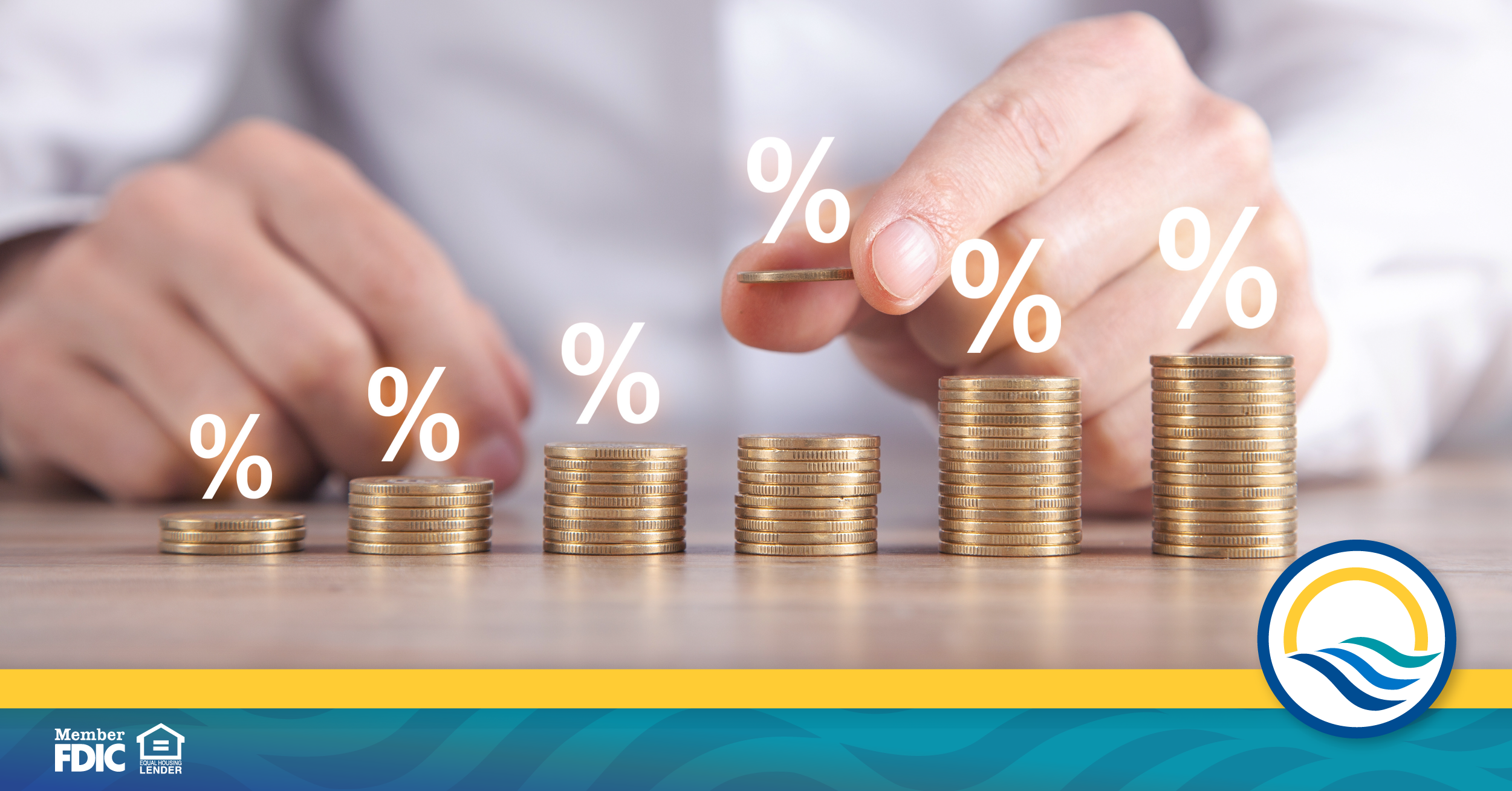Understanding Annual Percentage Yield and How It Affects Your Savings

Saving your money in a financial account entails more than simply storing it away for future use. A healthy savings strategy should bolster your funds by producing interest as you work toward your retirement. That’s why it’s important to understand APY and how it affects your savings.
What is APY?
The acronym APY stands for annual percentage yield. Investopedia contributor James Chen defines this term as “the real rate of return earned on an investment, taking into account the effect of compounding interest.” It’s the rate that you will earn interest on your savings or investment in one year if the interest is compounded and periodically added to the balance, thereby increasing it. Credit unions use a similar method based on the dividend rate and compounding frequency.
Why does compounding interest matter?
You can calculate the rate of return of your interest-earning account by looking at the period rate and the number of compounding periods. Why does the compounding matter? The more often interest is added to the balance, the higher future interest payments will be due to being calculated on that larger principal amount. If you earn $4 in interest on your $400,000 balance, you will begin earning interest on $400,004 when that amount is added to the balance. A simple interest rate doesn’t consider compounding, whereas APY reflects the amount of interest through compounding over a period of time.
That’s why APY can be difficult to compare across different accounts; the APY checking, savings, or certificate of deposit holdings can widely vary based on different compounding periods. “It is critical to know how often that compounding occurs,” explains Chen, “since the more often a deposit compounds, the faster the investment grows.” The APY rate can also change depending on what type of account you have. Most CD rates are locked in until your investment matures. A regular savings account will typically have a variable APY that periodically increases or decreases.
APY vs. APR
APY may remind you of a similar acronym: APR, which stands for annual percentage rate. It’s different from the annual percentage yield because it refers to the amount of interest that you’ll be charged when you borrow money through a credit card, loan, or line of credit. In the case of APR, you want an account with a low rate; conversely, you want an account with a high APY rate.
Why does APY matter?
APY is an indicator of how your investment could grow over a period of time. “APY can help you more clearly understand what you're earning on savings, money market or CD accounts by taking compound interest into account,” explains Experian writer Gayle Sato. You want a high-interest account for your savings to offset inflation and earn you some extra cash while it waits for your retirement.
How can you obtain a good APY on your stockpiled funds? “If you're willing to lock away some of your savings for a set period of time, consider a certificate of deposit, or CD,” recommends NerdWallet senior writer Spencer Tierney. “These accounts tend to have higher rates than even high-yield savings accounts for the tradeoff of leaving your money deposited for a certain time.”
It’s important to consider potential fees and penalties that may affect your APY. For example, an early withdrawal penalty on a CD would result in a lower APY on that account.
When you’re deciding on how to store your savings funds, seeking a rewarding APY should be a priority alongside other factors like fees, accessibility, and balance requirements.
